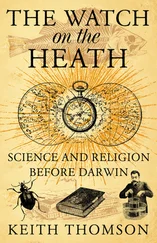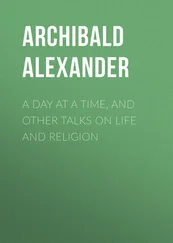Vikernes, Varg - Varg Vikernes - Sorcery and Religion in Ancient Scandinavia
Здесь есть возможность читать онлайн «Vikernes, Varg - Varg Vikernes - Sorcery and Religion in Ancient Scandinavia» весь текст электронной книги совершенно бесплатно (целиком полную версию без сокращений). В некоторых случаях можно слушать аудио, скачать через торрент в формате fb2 и присутствует краткое содержание. Жанр: Старинная литература, на английском языке. Описание произведения, (предисловие) а так же отзывы посетителей доступны на портале библиотеки ЛибКат.
- Название:Varg Vikernes - Sorcery and Religion in Ancient Scandinavia
- Автор:
- Жанр:
- Год:неизвестен
- ISBN:нет данных
- Рейтинг книги:3 / 5. Голосов: 1
-
Избранное:Добавить в избранное
- Отзывы:
-
Ваша оценка:
- 60
- 1
- 2
- 3
- 4
- 5
Varg Vikernes - Sorcery and Religion in Ancient Scandinavia: краткое содержание, описание и аннотация
Предлагаем к чтению аннотацию, описание, краткое содержание или предисловие (зависит от того, что написал сам автор книги «Varg Vikernes - Sorcery and Religion in Ancient Scandinavia»). Если вы не нашли необходимую информацию о книге — напишите в комментариях, мы постараемся отыскать её.
Varg Vikernes - Sorcery and Religion in Ancient Scandinavia — читать онлайн бесплатно полную книгу (весь текст) целиком
Ниже представлен текст книги, разбитый по страницам. Система сохранения места последней прочитанной страницы, позволяет с удобством читать онлайн бесплатно книгу «Varg Vikernes - Sorcery and Religion in Ancient Scandinavia», без необходимости каждый раз заново искать на чём Вы остановились. Поставьте закладку, и сможете в любой момент перейти на страницу, на которой закончили чтение.
Интервал:
Закладка:
A relevant myth in this context is the myth about Óðinn and Suttungr ("new concerns", "young sickness"). Óðinn turned himself into a serpent and crawled into a hole in Hnitbjörg ("nail built mountain"), the home of Suttungr, to steal his mead (made from the blood of the wisest man in the world). It was not a man made mountain, nailed together, but a barrow with a ship inside. He met Suttungr's daughter, Gunnlöð ("invitation to fight"), who was very difficult and tough. He softened her up with sorcery. The mead was stored in three tanks: Óðrœrir ("touch of the mind"), Són ("sounds", "atonement") and Boðn ("bid", "warning"). He spent three nights with her and drank the mead from one tank each night. When he had drunk it all he turned himself into a bird and flew away. Suttungr saw him, turned into an eagle and gave chase. When they arrived in Ásgarðr ("the spirit garden") he suffered the same fate as Þjazi. The other gods lit a fire and set fire to his feathers: he fell down and they beat him to death.
The god (i. e. king) who made this journey had already disguised himself as Óðinn, but to gain access to the realm of the dead he also had to escort a dead person, or else he had no business being there. The god therefore brought the cut down mistletoe, the body of Baldr, and used it as a key to open up the road to Hel. In this myth it is described as a worm; Bölþorn, alias Jörmungandr. The same mistletoe was used as a magic wand to soften up Gunnlöð; she calmed down because when she saw the wand (the mistletoe, a. k. a. the body of Baldr) she realised that he had a valid reason to be there.
Óðinn's meeting with Gunnlöð is described in another myth as well, where she is called by a different name, Rindr ("channel in the ground", "ditch"). In this myth Óðinn travelled to Hel to find a son who could avenge the killing of Baldr. He first had to (in a bride's race) defeat Höðr, Hel's husband, who in this myth is called Ullr ("wool", "cover up", "surround"), before he could lure her into bed. At first he failed to lure her into bed. He tried to threaten her, but she still refused to comply. Finally he had to, just like Heimdallr, Loki and Þórr, dress up, like a woman, to get her into bed. He then took her by force, so that Rindr became pregnant and gave him a son, Váli ("chosen", "fallen").
When we know all of this we easily understand the song about Óðinn in Hávamál; he hanged himself in the sacrificial tree, Heimdallr (alias Yggdrasill), and hung there for nine nights, tasting neither food nor drink, before he fell down into the grave and picked up the runes (secrets). He also learned nine spells (songs) from Bölþorn.
We must realise that these mysteries were created in a time when man did not know that the sexual intercourse was what made the women pregnant. The myths about Óðinn who met Gunnlöð/Rindr are therefore not the original myths; they must have been changed in the transition from matriarchy to patriarchy. They only needed to be slightly changed; originally they told about a meeting with the goddess, where the god (i. e. king) asked for Baldr to be allowed to return, and where he learned the secrets of life from her songs (spells). He himself was reborn as Váli, the chosen one so he still produced that new son he needed to avenge the death of Baldr. When he left the burial mound, the divine womb of the Earth goddess, he was born anew as Váli, when the Sun rose the first day of the new year, in Váli's month (house), Valaskjálfr ("the tremors of the fallen/chosen"). Váli was born in a dramatic play, trembling, shaking and screaming as he entered the world from the realm of the dead. Only one day old he was thus able to hunt down and kill Höðr, and avenge the death of Baldr.
In reality, after the dramatic birth of the newly initiated, the initiated men left for the forest to hunt Höðr/Ullr, the autumn and winter darkness. They did what was only logical; they hunted down and killed the animals that were seen as the spirit animals of winter. In Scandinavia this was the bear and the wolf, but in other parts of Europe they killed other animals instead or as well, and the religious hunt lasted for nine days. This was the nine days Óðinn hung in the sacrificial tree, the nine days it took to reach Hel. The clothes of these initiates still hung in the trees, while they themselves ran naked and unprotected through the forest, armed only with spears, clubs, shields, bows and arrows. Those who managed to kill such an animal stole the life force of the animal, and became berserks.
We learn more about this from the myth about Loki's son Nárfi ("corpse", "dead") and Váli. Váli was changed into a wolf and tore Nárfi to bits and pieces, and took his bowels and used them to bind Loki to three rocks. Loki is in this context of course yet another name for the winter spirit. This body of Loki, Nárfi, was maimed by the kings, who needed the blood, heart and fur from the bears and wolves they killed to become berserks themselves – and to overcome death. They put remains of the animals in the burial mound, or at least their bowels, and perhaps bones, and placed them on the rocks there. So Loki had to sink down into a cave under a cove of trees (the sacrificial trees on the burial mounds), and lie there like a corpse until Ragnarök, when he was finally set free and along with Höðr/Ullr attacked the gods. This might, by the way, explain all the bear skeletons or just bear skulls found in caves used by pre-historic man.
From Greek mythology we know another example of this death cult. Herakles ("glory of the chosen", "pride of the chosen") killed the Nemean lion and wore his hide as protection – and because of that became invulnerable.
In Scandinavia the deity Skaði lead the procession of hunters chasing Höðr/Ullr, and because of that we also know him as Öndurgoð ("procession god") and Önduráss ("procession spirit"). The hunt lasted for nine days, and because of that in order to survive the hunters had to ask for food and drink from anyone they came across. It was considered very shameful not to give something to this party, and those who refused to were often victims of retaliation. The hunters often killed their livestock, destroyed their tools or even set fire to buildings, and they had the right to do so.
In all the myths dealing with Halloween the gods return from the realm of the dead with something; Heimdallr/Hermóðr returns with two rings and a blanket from Baldr and Nanna; Loki turned Íðunn into a nut and brought her back home; Þórr got his hammer back and Óðinn found the runes. We don't know exactly when they brought these things back, though, and we know that they had to wait before they could get Baldr back.
In ancient times the dead were buried sitting up, along with all their most fine equipment, weapons, gold and other riches, because they believed that the dead needed all of this for their journey to Hel across the river of forgetfulness. When there, in Hel, they no longer needed these items, and because of that, the living entered the burial mounds to collect them. They took these objects and hid them in the woods or elsewhere, for the Winter Solstice.
Because these men had been reborn as gods (Váli), if they hadn't been gods already, that is, they were not allowed to cut their hair or nails until after winter had been killed. That is; until after the Yule tide and in particular Ragnarök. If they did cut their hair or nails it would mean disaster for all the trees and other growths in nature, and the gods would lose all their strength.
On the 9 thday of Valaskjálfr the hunt was over and the bear had been sent to his death. It was therefore called the Bear Night. This day marked the end of the religious hunt for Höðr/Ullr. He was now considered dead and banished to Hel. They celebrated the victory over these winter spirits with a feast, and usually ate either bear or wolf meat, depending on what predator they had managed to catch.
Читать дальшеИнтервал:
Закладка:
Похожие книги на «Varg Vikernes - Sorcery and Religion in Ancient Scandinavia»
Представляем Вашему вниманию похожие книги на «Varg Vikernes - Sorcery and Religion in Ancient Scandinavia» списком для выбора. Мы отобрали схожую по названию и смыслу литературу в надежде предоставить читателям больше вариантов отыскать новые, интересные, ещё непрочитанные произведения.
Обсуждение, отзывы о книге «Varg Vikernes - Sorcery and Religion in Ancient Scandinavia» и просто собственные мнения читателей. Оставьте ваши комментарии, напишите, что Вы думаете о произведении, его смысле или главных героях. Укажите что конкретно понравилось, а что нет, и почему Вы так считаете.












